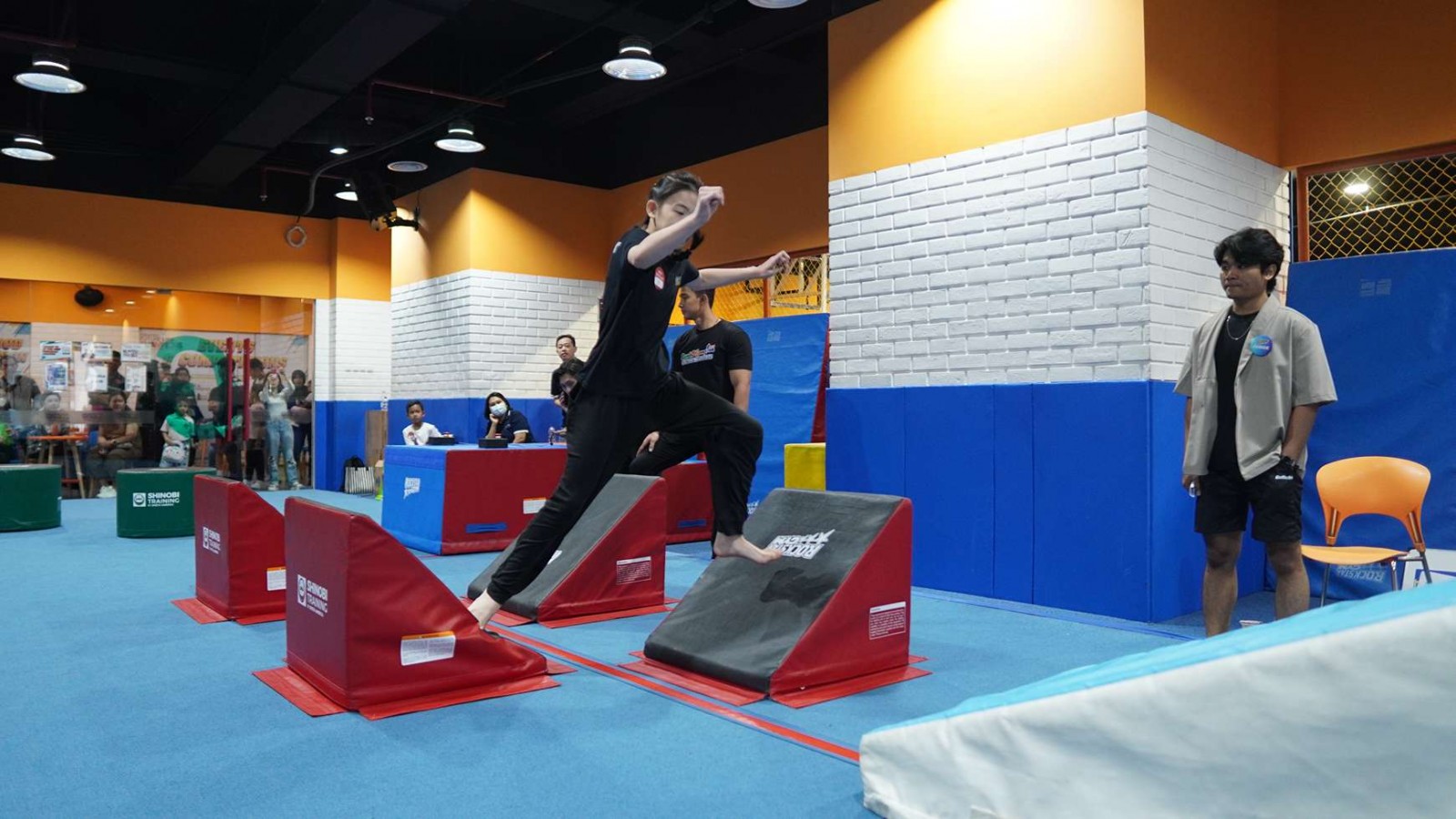Wall Run Techniques: A Beginner's Guide

Wall run is one of the parkour tricks that are a sight to behold, captivating practitioners and spectators alike with their blend of agility and daring. However, while the wall run may appear to be a seamless display of skill, it’s important to remember that it’s not as easy as it looks.
Mastering this technique requires a combination of strength, precision, and plenty of practice. So, if you’re ready to challenge yourself and take your parkour game to new heights, let’s dive into the essentials of perfecting the wall run!
What is a Wall Run?
A wall run is a technique used in parkour that allows you to run up a vertical wall or along a horizontal wall. The wall run utilizes momentum, body control, and coordination to gain height or distance, making it useful for overcoming walls, fences, or other obstacles. There are two primary types of wall runs:
- Vertical Wall Run
Ascending a vertical surface to reach a higher point.
- Horizontal Wall Run
Running along the surface of a wall.
Understanding both types is crucial for anyone looking to master the wall run technique.
Prerequisites for Wall Run
Before diving into the exciting world of wall runs, it’s essential to have a solid foundation in basic parkour skills. Think of it like building a strong base for a house; without it, everything above could come tumbling down.
Here are the key prerequisites you should focus on before attempting wall runs:
1. Basic Running Skills
Running is the foundation of almost all parkour moves, including wall runs. You need to be comfortable with speed and control to generate the momentum required for a successful wall run.
2. Jumping Ability
Wall runs require you to jump effectively and gain height when you hit the wall. A solid jumping technique is crucial for getting the lift you need.
You can practice your jumping ability by beginning with basic jumps, where you jump as high as you can while keeping your feet together. Next, work on the “jump and tuck” technique, where you jump and bring your knees up towards your chest.
This will help you get comfortable with the motion of jumping off the ground and will be useful for your wall run.
3. Climbing Skills
Understanding how to climb helps you transition from running to wall run more smoothly. It also helps you feel more confident when tackling vertical surfaces.
Focus on using your legs and arms to pull yourself up, and pay attention to your body positioning. Simple climbing drills can enhance your strength and agility, making your wall runs easier.
4. Core Strength
A strong core is vital for maintaining balance and control while executing wall runs. It helps stabilize your body as you push off the wall and land.
Incorporate exercises that target your core into your training routine. Planks, sit-ups, and leg raises are great options. Even simple activities like balancing on one leg can improve your core strength and stability.
5. Leg Strength
Your legs are the powerhouses of your wall run. Strong legs help you push off effectively and maintain speed during your run.
Include strength-building exercises like squats, lunges, and calf raises in your workouts. These exercises will help you build the leg strength needed to jump and push off the wall with confidence.
Step-by-Step Guide to Vertical Wall Run
Here’s a detailed guide on how to perform a vertical wall run:
A. Approach the Wall
Start by running towards the wall at a moderate speed. Your goal is to build enough momentum without going too fast that you lose control. Aim for a distance of about 3-5 feet away from the wall to begin with.
Keep your body relaxed but focused. Lean slightly forward, keeping your arms bent at your sides to help with balance.
B. Prepare to Jump
As you get closer to the wall, you’ll want to prepare for your jump. You should begin to gather yourself and get ready to spring off the ground.
Place your dominant foot (the one you feel more comfortable jumping off) slightly behind your other foot. This will give you a powerful push-off.
C. Jump Off the Ground
As you reach the wall, push off the ground with both feet. This is where your leg strength comes into play. The more powerful your jump, the higher you can go!
Swing your arms upward and forward as you jump. This motion helps propel your body upward and forward toward the wall.
D. Kicking Off the Wall
As your feet approach the wall, aim to make contact with the wall using the foot that is positioned behind. This is your primary push-off foot.
Use your foot to kick off the wall while simultaneously pushing against it. Imagine trying to leap higher and propel yourself upward. This push will give you the height you need to continue your ascent.
E. Position Your Body
As you push off, lean your body into the wall slightly. This angle will help maintain balance and allow you to gain more height.
Bring your knees up towards your chest while pushing off the wall. This action helps you gain even more elevation.
F. Land Safely
As you reach the top of your jump and begin to descend, prepare to land. Keep your eyes on the ground and look for a safe landing spot.
Aim to land on your feet, bending your knees slightly to absorb the impact. If you find you’re coming down hard, you can also roll to help disperse the force of the landing.
Step-by-Step Guide to Horizontal Wall Run
Here’s a step-by-step breakdown of how to execute a horizontal wall run:
1. Choose the Right Wall
Start with a wall that is at least 3-4 feet high and has a smooth surface. Look for walls that are sturdy and safe to practice on. Make sure you have enough space to run toward the wall without any obstacles in your way.
2. Approach the Wall
Begin by running towards the wall at a comfortable speed. Your goal is to gather enough momentum to carry you sideways along the wall. Lean slightly forward, keeping your arms relaxed at your sides or slightly out for balance.
3. Jump Off the Ground
As you get close to the wall (about 1-2 feet away), bend your knees slightly and get ready to jump. Push off the ground with both feet. This jump should be quick and explosive, propelling your body toward the wall.
4. Make Contact with the Wall
Aim to make contact with the wall using your leading foot (the foot that’s in front as you approach). This is often your dominant foot.
As soon as your foot makes contact with the wall, use it to push off. This push should be firm but controlled.
5. Shift Your Body Weight
As you push off, lean your body toward the wall. This will help maintain balance and allow you to glide along the surface.
Your legs should be extended and your toes pointed. This positioning helps you keep a streamlined shape as you run along the wall.
6. Use Your Arms for Balance
Use your arms to help maintain your balance. Swing them gently in the direction of your movement, allowing them to counterbalance your body’s weight. Keep your arms and shoulders relaxed to avoid unnecessary tension, which can affect your balance.
7. Continue the Run
As you glide along the wall, continue to push off with your foot, maintaining momentum. Keep your eyes focused on where you want to go, which helps maintain your balance and direction.
8. Prepare to Land
As you approach the end of the wall run, prepare to transition back to the ground. As you land, bend your knees to absorb the impact, and roll if necessary to disperse any force. Aim to land on your feet and maintain your balance.
Ready to Try Wall Run?
Mastering the wall run is just one of the exciting skills your child can learn in the world of parkour. If they’re ready to take the leap, enrolling them in a parkour program at Rockstar Academy is a fantastic way to start their journey.
Not only will they learn essential techniques, but they’ll also have the chance to compete in thrilling events like the Elite Championships and RockOlympics. These competitions provide an incredible opportunity for our students to discover their true potential and showcase their skills.
Plus, to make sure it’s the right fit, you can sign up for our free trial class and experience the fun firsthand! Let’s get your child moving and soaring in the world of parkour!
FAQ
How long does it take to learn a wall run?
The time it takes to learn a wall run varies from person to person. With consistent practice and dedication, many beginners can master the technique within a few weeks.
What is the best way to practice wall runs alone?
You can practice wall runs alone by setting up a safe environment, starting with small walls, and gradually increasing the difficulty as you gain confidence and skill.
Are there any common mistakes to avoid?
Yes, common mistakes include not generating enough momentum, improper foot placement on the wall, and neglecting to maintain a strong core. Focus on mastering each step before moving to more complex techniques.



